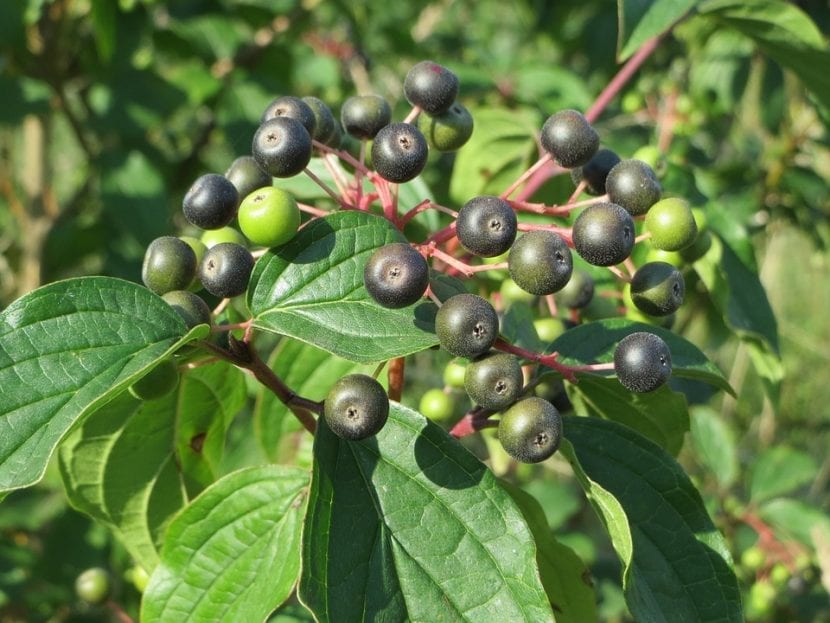
El cornus sanguinea It is a shrub of exceptional beauty, and is that unlike most species it has the branches of a beautiful color, which makes it a very interesting option to grow in ... anywhere 😉.
Although their maintenance and care are somewhat special, knowing them will allow you to enjoy this plant very much. So that, then we leave you with your file.
Origin and characteristics
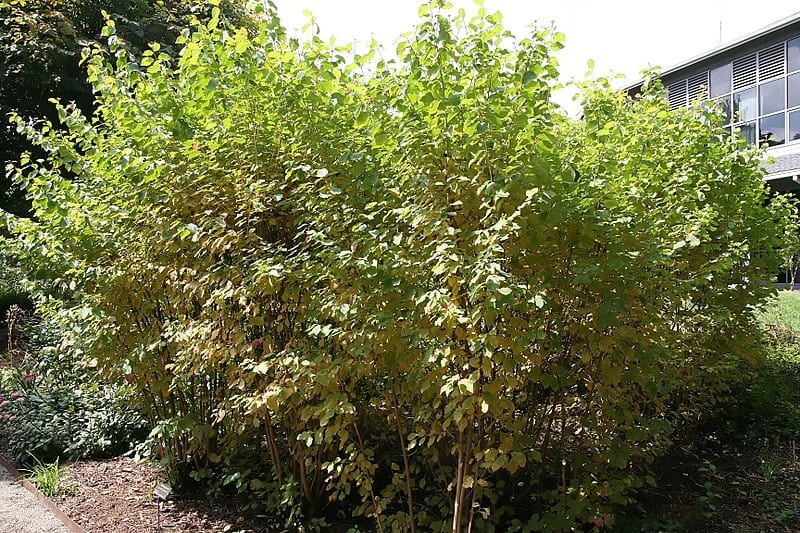
Image - Wikimedia / David J. Stang
Our protagonist is a shrub or deciduous tree native to Europe and Western Asia whose scientific name is Cornus sanguinea. It is popularly known as dogwood, red dogwood, sanguino or sanguiño, and grows to a height between 2 and 6 meters. The branches are greenish or reddish brown in color, and opposite leaves grow from them, 4-8cm long by 2-4cm wide.
The flowers are hermaphroditic, 5 to 10mm in diameter, and are composed of four white petals. The fruit is a black berry of 5-8mm in diameter, and inside we will find a single seed.
What are their cares?
If you dare to have a copy, we recommend that you provide it with the following care:
Location
It is a plant that It must be outside, in semi-shade. Its roots are not invasive, but as it is a plant that branches a lot and also from below it is advisable to place it at a distance of one or two meters from the wall and other plant beings.
Earth
El cornus sanguinea It grows in humid, fertile and slightly acidic soils (pH 4 to 6), therefore, depending on where it is grown, one soil or another will have to be used:
- Flower pot: substrate for acidic plants (for sale here).
- Garden: if you have the conditions described above, nothing will have to be changed; Otherwise, you will have to make a planting hole of about 50cm x 50cm, cover it with shading mesh and fill it with substrate for acid plants.
Irrigation
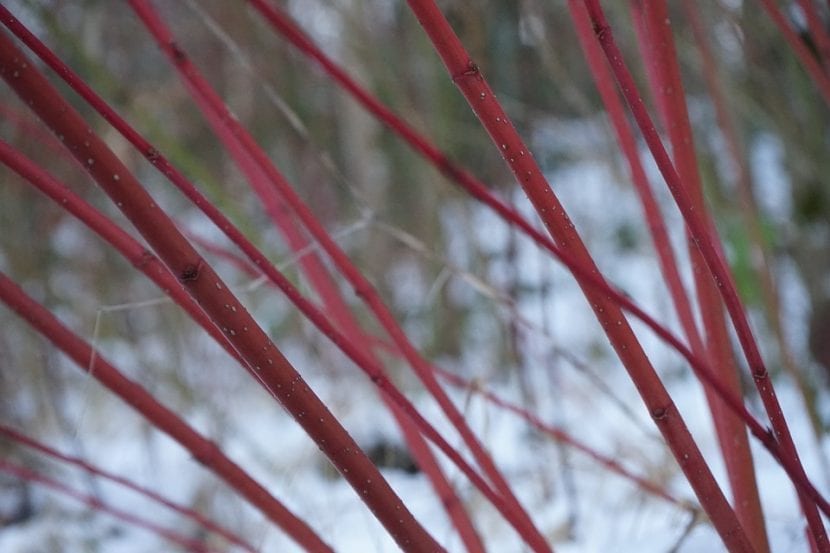
The frequency of irrigation will vary throughout the year, and is that while during the summer it will be necessary to water more often, in autumn and winter it may take several days before we give it water again. But also, it must be borne in mind that it is very sensitive to excess watering, so it is highly recommended to check the humidity before doing anything. How do you do that? Very easy:
- With a digital humidity meter
- Introducing a thin wooden stick (if when you extract it it comes out with a lot of adhered earth, we will not water)
- Weighing the pot once watered and again after a few days
Anyway, in case of doubt we will water 3-4 times a week in the warmest and driest season, and every 4-5 days the rest, always using rainwater, without lime or acidified (diluting the liquid of half a lemon in 1l / water).
Subscriber
From early spring to late summer it is advisable to pay with ecological fertilizers once a month. It is necessary to avoid the use of chemical products, as the fruits are consumed by many birds.
Multiplication
El cornus sanguinea multiplies by seeds in autumn (they need to be cold before germinating) and separation of root sprouts in spring. Let's see how to proceed in each case:
Seeds
- First, a tupperware is filled with previously moistened vermiculite.
- Then the seeds are sown.
- They are then covered with a thin layer of vermiculite.
- The next step is to sprinkle the substrate with copper or sulfur, to avoid the appearance of fungi.
- Finally, it is watered again with a sprayer, and the tupperware is placed in the refrigerator, where the milk, sausages, etc.
- Once a week, the tupperware is opened to renew the air.
- After three months, they are sown in a pot with a substrate for acidic plants, outdoors, in semi-shade.
If everything goes fine, will germinate in 2-3 weeks, one month maximum.
Sprouts
The way to extract them is with a hand shovel, and if necessary a small saw. Then they are planted in a pot with vermiculite (you can get it here) and irrigated with homemade rooting agents.
Pruning
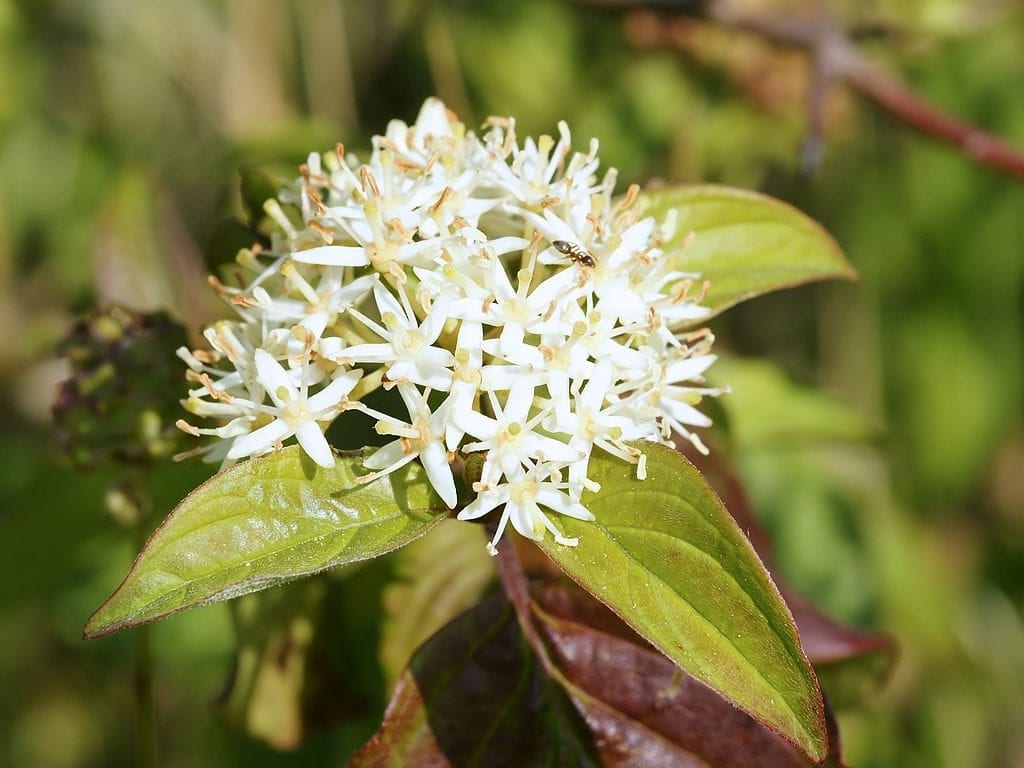
Image - Wikimedia / Hans Hillewaert
El cornus sanguinea it is a shrub that can be pruned late winter. You have to cut dry, diseased or weak branches, and trim those that are having an exaggerated growth.
Rusticity
Prefers temperate climates, with mild summers and cold winters. Its ideal temperature range is between 30ºC maximum and -15ºC minimum.
What uses does it have?
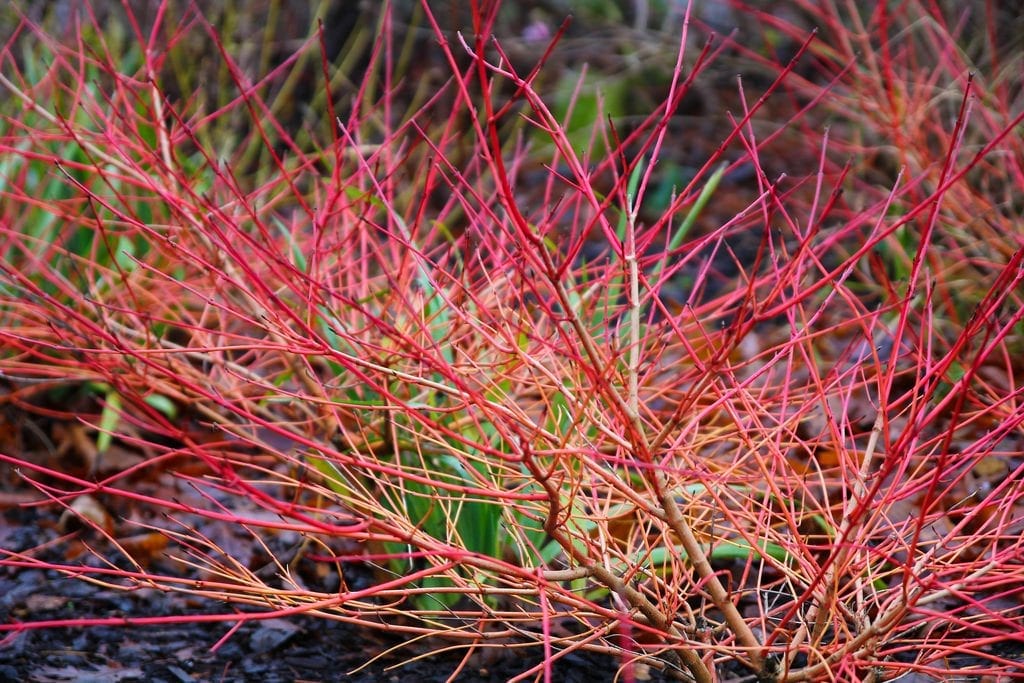
Image - Flickr / je_wyer
Ornamental
It is used for its beauty 🙂, both as an isolated specimen and in groups, potted or in the garden.
Wood
Wood is hard and strong, so used to make musical instruments, handles and small parts. The branches, being flexible, are also used as tutors for plants.
Bird food
The fruits are consumed by different species of birds. But beware: in humans they can cause vomiting, so it is better not to try them if you want.
What did you think of the cornus sanguinea?
A magnificent article. Congratulations on such a good job.
Thank you very much.